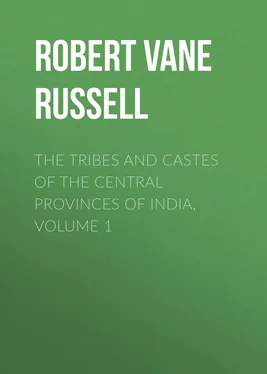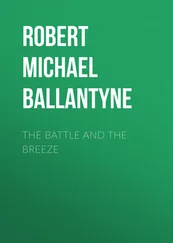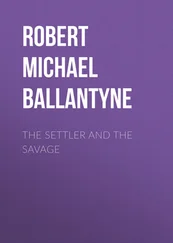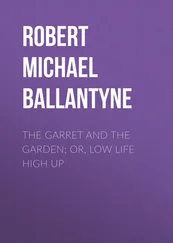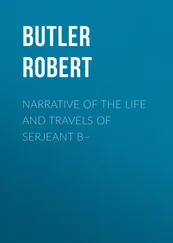Robert Vane Russell - The Tribes and Castes of the Central Provinces of India, Volume 1
Здесь есть возможность читать онлайн «Robert Vane Russell - The Tribes and Castes of the Central Provinces of India, Volume 1» — ознакомительный отрывок электронной книги совершенно бесплатно, а после прочтения отрывка купить полную версию. В некоторых случаях можно слушать аудио, скачать через торрент в формате fb2 и присутствует краткое содержание. Жанр: foreign_prose, История, foreign_edu, foreign_antique, на английском языке. Описание произведения, (предисловие) а так же отзывы посетителей доступны на портале библиотеки ЛибКат.
- Название:The Tribes and Castes of the Central Provinces of India, Volume 1
- Автор:
- Жанр:
- Год:неизвестен
- ISBN:нет данных
- Рейтинг книги:5 / 5. Голосов: 1
-
Избранное:Добавить в избранное
- Отзывы:
-
Ваша оценка:
- 100
- 1
- 2
- 3
- 4
- 5
The Tribes and Castes of the Central Provinces of India, Volume 1: краткое содержание, описание и аннотация
Предлагаем к чтению аннотацию, описание, краткое содержание или предисловие (зависит от того, что написал сам автор книги «The Tribes and Castes of the Central Provinces of India, Volume 1»). Если вы не нашли необходимую информацию о книге — напишите в комментариях, мы постараемся отыскать её.
The Tribes and Castes of the Central Provinces of India, Volume 1 — читать онлайн ознакомительный отрывок
Ниже представлен текст книги, разбитый по страницам. Система сохранения места последней прочитанной страницы, позволяет с удобством читать онлайн бесплатно книгу «The Tribes and Castes of the Central Provinces of India, Volume 1», без необходимости каждый раз заново искать на чём Вы остановились. Поставьте закладку, и сможете в любой момент перейти на страницу, на которой закончили чтение.
Интервал:
Закладка:
50. Terms of relationship
Exogamy and totemism are found not only in India, but are the characteristics of primitive social groups over the greater part of the world. Totemism establishes a relation of kinship between persons belonging to one clan who are not related by blood, and exogamy prescribes that the persons held to be so related shall not intermarry. Further, when terms of relationship come into existence it is found that they are applied not to members of one family, but to all the persons of the clan who might have stood in each particular relationship to the person addressing them. Thus a man will address as mother not only his own mother, but all the women of his clan who might have stood to him in the relation of mother. Similarly he will address all the old men and women as grandfather or grandmother or aunt, and the boys and girls of his own generation as brother and sister, and so on. With the development of the recognition of the consanguineous family, the use of terms of relationship tends to be restricted to persons who have actual kinship; thus a boy will address only his father’s brothers as father, and his cousins as brothers and sisters; but sufficient traces of the older system of clan kinship remain to attest its former existence. But it seems also clear that some, at least, of the terms of relationship were first used between persons really related; thus the word for mother must have been taught by mothers to their own babies beginning to speak, as it is a paramount necessity for a small child to have a name by which to call its mother when it is wholly dependent on her; if the period of infancy is got over without the use of this term of address there is no reason why it should be introduced in later life, when in the primitive clan the child quickly ceased to be dependent on its mother or to retain any strong affection for her. Similarly, as shown by Sir J.G. Frazer in Totemism and Exogamy , there is often a special name for the mother’s brother when other uncles or aunts are addressed simply as father or mother. This name must therefore have been brought into existence to distinguish the mother’s brother at the time when, under the system of female descent, he stood in the relation of a protector and parent to the child. Where the names for grandfather and grandmother are a form of duplication of those for father and mother as in English, they would appear to imply a definite recognition of the idea of family descent. The majority of the special names for other relatives, such as fraternal and maternal uncles and aunts, must also have been devised to designate those relatives in particular, and hence there is a probability that the terms for father and brother and sister, which on a priori grounds may be considered doubtful, were also first applied to real or putative fathers and brothers and sisters. But, as already seen, under the classificatory system of relationship these same terms are addressed to members of the same clan who might by age and sex have stood in such a relationship to the person addressing them, but are not actually akin to him at all. And hence it seems a valid and necessary conclusion that at the time when the family terms of relationship came into existence, the clan sentiment of kinship was stronger than the family sentiment; that is, a boy was taught or made to feel that all the women of the clan of about the same age as his mother were as nearly akin to him as his own mother, and that he should regard them all in the same relation. And similarly he looked on all the men of the clan of an age enabling them to be his fathers in the same light as his own father, and all the children of or about his own age as his brothers and sisters. The above seems a necessary conclusion from the existence of the classificatory system of relationship, which is very widely spread among savages, and if admitted, it follows that the sentiment of kinship within the clan was already established when the family terms of relationship were devised, and therefore that the clan was prior to the family as a social unit. This conclusion is fortified by the rule of exogamy which prohibits marriage between persons of the same clan between whom no blood-relationship can be traced, and therefore shows that some kind of kinship was believed to exist between them, independent of and stronger than the link of consanguinity. Further, Mr. Hartland shows in Primitive Paternity 92 92 Vol. i. pp. 272, 276.
that during the period of female descent when physical paternity has been recognised, but the father and mother belong to different clans, the children, being of the mother’s clan, will avenge a blood-feud of their clan upon their own father; and this custom seems to show clearly that the sentiment of clan-kinship was prior to and stronger than that of family kinship.
51. Clan kinship and totemism
The same argument seems to demonstrate that the idea of kinship within the clan was prior to the idea of descent from a common ancestor, whether an animal or plant, a god, hero or nicknamed ancestor. Because it is obvious that a set of persons otherwise unconnected could not suddenly and without reason have believed themselves to be descended from a common ancestor and hence related. If a number of persons not demonstrably connected by blood believe themselves to be akin simply on account of their descent from a common ancestor, it can only be because they are an expanded family, either actually or by fiction, which really had or might have had a common ancestor. That is, the clan tracing its descent from a common ancestor, if this was the primary type of clan, must have been subsequent to the family as a social institution. But as already seen the sentiment of kinship within the clan was prior to that within the family, and therefore the genesis of the clan from an expanded family is an impossible hypothesis; and it follows that the members of the clan must first have believed themselves to be bound together by some tie equivalent to or stronger than that of consanguineous kinship, and afterwards, when the primary belief was falling into abeyance, that of descent from a common ancestor came into existence to account for the clan sentiment of kinship already existing. If then the first form of association of human beings was in small groups, which led a migratory life and subsisted mainly by hunting and the consumption of fruits and roots, as the Australian natives still do, the sentiment of kinship must first have arisen, as stated by Mr. M’Lennan, in that small body which lived and hunted together, and was due simply to the fact that they were so associated, that they obtained food for each other, and on occasion protected and preserved each other’s lives. 93 93 Studies in Ancient History , p. 123.
These small bodies of persons were the first social units, and according to our knowledge of the savage peoples who are nearest to the original migratory and hunting condition of life, without settled habitations, domestic animals or cultivated plants, they first called themselves after some animal or plant, usually, as Sir J.G. Frazer has shown in Totemism and Exogamy , 94 94 See lists of totems of Australian and Red Indian tribes. Sir J.G. Frazer notes that the majority are edible animals or plants.
after some edible animal or plant. The most probable theory of totemism on a priori grounds seems therefore to be that the original small bodies who lived and hunted together, or totem-clans, called themselves after the edible animal or plant from which they principally derived their sustenance, or that which gave them life. While the real tie which connected them was that of living together, they did not realise this, and supposed themselves to be akin because they commonly ate this animal or plant together. This theory of totemism was first promulgated by Professor Robertson Smith and, though much disputed, appears to me to be the most probable. It has also been advocated by Dr. A.C. Haddon, F.R.S. 95 95 Address to the British Association, 1902. I had not had the advantage of reading the address prior to the completion of this work.
The Gaelic names for family, teadhloch and cuedichc or coedichc , mean, the first, ‘having a common residence,’ the second, ‘those who eat together.’ 96 96 M’Lennan, Studies in Ancient History , p. 123, quoting from Grant’s Origin and Descent of the Gael .
The detailed accounts of the totems of the Australian, Red Indian and African tribes, now brought together by Sir J.G. Frazer in Totemism and Exogamy , show a considerable amount of evidence that the early totems were not only as a rule edible animals, but the animals eaten by the totem-clans which bore their names. 97 97 Totemism and Exogamy , i. pp. 112, 120, ii. p. 536, iii. pp. 100, 162; Native Tribes of Central Australia , pp. 209–10; Native Tribes of South-East Australia p. 145; Native Tribes of Northern Australia (Professor Baldwin Spencer), pp. 21, 197; J.H. Weeks, Among the Primitive Bakongo , p. 99.
But after the domestication of animals and the culture of plants had been attained to, the totems ceased to be the chief means of subsistence. Hence the original tie of kinship was supplanted by another and wider one in the tribe, and though the totem-clans remained and continued to fulfil an important purpose, they were no longer the chief social group. And in many cases, as man had also by now begun to speculate on his origin, the totems came to be regarded as ancestors, and the totem-clans, retaining their sentiment of kinship, accounted for it by supposing themselves to be descended from a common ancestor. They thus also came to base the belief in clan-kinship on the tie of consanguinity recognised in the family, which had by now come into existence. This late and secondary form of totemism is that which obtains in India, where the migratory and hunting stage has long been passed. The Indian evidence is, however, of great value because we find here in the same community, occasionally in the same caste, exogamous clans which trace their descent sometimes from animals and plants, or totems, and sometimes from gods, heroes, or titular ancestors, while many of the clans are named after villages or have names to which no meaning can be attached. As has been seen, there is good reason to suppose that all these forms of the exogamous clan are developed from the earliest form of the totem-clan; and since this later type of clan has developed from the totem-clan in India, it is a legitimate deduction that wherever elsewhere exogamous clans are found tracing their descent from a common ancestor or with unintelligible names, probably derived from places, they were probably also evolved from the totem-clan. This type of clan is shown in Professor Hearn’s Aryan Household to have been the common unit of society over much of Europe, where no traces of the existence of totemism are established. 98 98 See pp. II, 138, 190 (Edition 1891).
And from the Indian analogy it is therefore legitimate to presume that the totem-clan may have been the original unit of society among several European races as well as in America, Africa, Australia and India. Similar exogamous clans exist in China, and many of them have the names of plants and animals. 99 99 Totemism and Exogamy , ii. pp. 338, 339.
Интервал:
Закладка:
Похожие книги на «The Tribes and Castes of the Central Provinces of India, Volume 1»
Представляем Вашему вниманию похожие книги на «The Tribes and Castes of the Central Provinces of India, Volume 1» списком для выбора. Мы отобрали схожую по названию и смыслу литературу в надежде предоставить читателям больше вариантов отыскать новые, интересные, ещё непрочитанные произведения.
Обсуждение, отзывы о книге «The Tribes and Castes of the Central Provinces of India, Volume 1» и просто собственные мнения читателей. Оставьте ваши комментарии, напишите, что Вы думаете о произведении, его смысле или главных героях. Укажите что конкретно понравилось, а что нет, и почему Вы так считаете.
